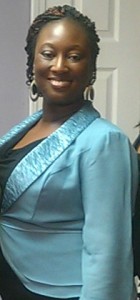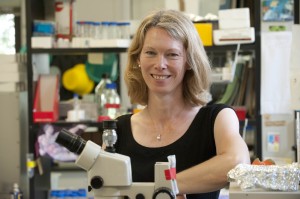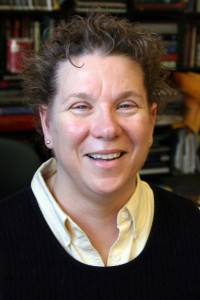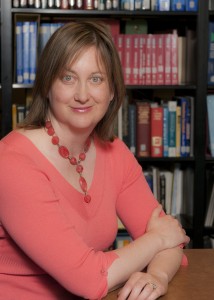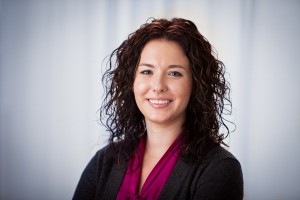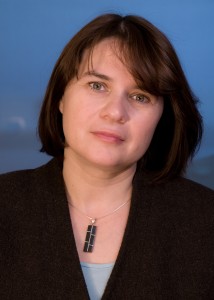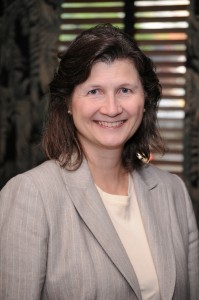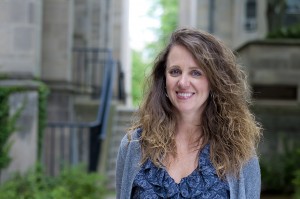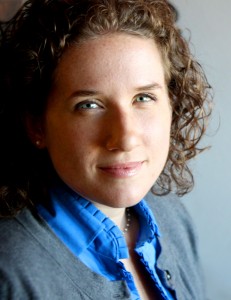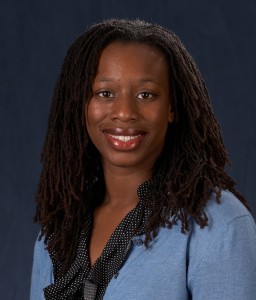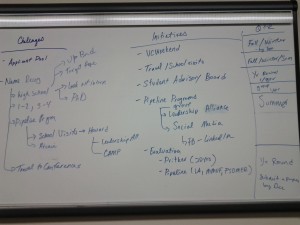I have recently come home from a motivational and inspirational evening with Bridgette Heller, an Executive Vice President and President of Consumer Care at Merck & Co. Inc. During her presentation, Bridgette carried her audience through the timeline of her life: from a little girl in a segregated community in Florida to a strong, motivational and inspirational leader. Listening to her talk, I realized once more that it doesn’t matter where one comes from, so long as he/she has the drive and the desire to succeed. I am certain that Dr. Marla Issac, PhD agrees with me. Despite the many challenges which sprung up during Marla’s graduate training, she has persevered and succeeded, showing to herself and to everyone around her that anything is possible. Thus, I have nominated Marla, whom I have the privilege of knowing since grad school days at Northwestern University, as our October Scientist of the Month.
Out of high school, scientific endeavors for Marla started at Xavier University in Louisiana where she has spent her first year as an undergraduate. The following year, Marla transferred closer to home (she was born in Chicago, IL) to the University of Illinois in Chicago (UIC) to complete her bachelors of arts degree in biology. “I chose biology because I loved my biology classes in high school. I took general biology and then anatomy and physiology. The anatomy class is what really sparked my interest in pursuing biology as a major in college. I was absolutely fascinated by all the inner workings of the body.”
Marla was intrigued by biology so much that, during her junior year at UIC, Marla made a decision to pursue a PhD degree in this field, rather than attending medical school. “During my junior year at UIC , I came across information about a program called the McNair Scholars Program. It is program that introduced minority and first generation college students to the world of research by having them conduct research in a lab on campus during the academic school year. Before finding out about that program, I had no clue what graduate school was, I didn’t know that there was a way to become a Doctor without going to medical school. So this program intrigued me and I applied. The first time I applied I was denied because the director of the program said that although I was extremely bright, my personal statement indicated that I wanted to attend medical school, not graduate school. This was the truth, I had always wanted to go to medical school, but that was because I had never heard of graduate school. I didn’t take that rejection to heart. I tweaked my personal statement, this time emphasizing my interest in graduate education, and was successful. I got into the McNair Program. Following that experience I then conducted research in the summers in the SROP and CURE programs. Biology was now ‘my thing’ and I was hooked.”
Although Marla expected for her PhD training to present some challenges, at some point the challenges both in and out of the laboratory seemed insurmountable. A few years into starting her thesis work in the lab of Drs. Tamas Jilling and Michael Caplan, Marla was confronted with some devastating news. Her mother was unexpectedly killed in a hit-and-run by a bus driver during her visit to Jamaica. As a result, Marla found herself not only dealing with complexities of research, but trying to hold herself together while becoming the matriarch of her siblings. At times, the stresses from all of these events just seemed too much. “There were many days where I felt discouraged and didn’t know if I could make it through…But every time I saw my family they were so proud of me and so excited that I was in grad school and would be the first in our family to obtain a PhD, so I couldn’t give up. I felt like I did not have to option to fail. I wanted to show all of my younger siblings, nieces and nephews that if I could do it, then so could they. So I persevered, and made it through. Hopefully my success has encouraged the ones that are coming after me to do the same.”
Marla has accomplished her dream. She was hooded with a PhD in Biology in July 2013 and is now spending her professional life inspiring others. Marla currently holds 3 professional positions. “My primary role is Coordinator of Multicultural Affairs for The Graduate School at Northwestern, a job I began just two days after graduation. In this role I directed the very same summer research program that I had once participated in as an undergraduate student, SROP. Now, I head all of the recruitment initiatives for the graduate school, I travel around the US to local and national conferences, as well as other universities to encourage minority students to apply to Northwestern for graduate education.
I am also an adjunct lecturer for the School of Continuing Studies, teaching a 3hr Genetics and Evolutionary Biology lecture course. In addition I work as a Teaching Assistant for a biology lab run through the Masters of Biotechnology program.” She does this all with a smile and while continuing to take care of the family who is amazed by all that she has accomplished. When she does have time to unwind (though I honestly don’t understand when she finds this time), Marla enjoys spending time with her family and friends relaxing, though sometimes she just enjoys the precious time of being alone.
When asked about the one lesson she would pass on to graduate students pursuing advanced degrees in the sciences, the message that Marla passed on resonated well with the lessons discussed by Bridgette Heller. “Live a balanced life, work hard but also take time to enjoy life. Don’t let your work be the only thing in your life that makes you happy because it will surely fail to do so at some point.”

